Trip Info
-
Minivan, Modified Safari Vehicle, 4x4 D/Cab, 4x4 SUV
-
3 Star Hotels, Lodges, Guesthouses
-
Dinner, Bed and Breakfast
-
Scheduled Accommodated Tour
-
English, German, French, Spanish
-
Easy to Moderate
-
Min: 2 & Max: 12
-
All year round
-
Windhoek City
-
Windhoek City
-
12
-
75
Overview
Explore the main attractions in northern Namibia including the amazing wildlife in Etosha National Park and have first-hand experience of the Stone Age culture of the Himba Tribes. Namibia’s UNESCO Heritage Site in beautiful desert Damaraland is next and then on to Namibia’s premier seaside town, Swakopmund on the Skeleton Coast, before returning to Windhoek. This trip departs from Windhoek every Sunday morning.
Trip Highlights
- Experience Etosha National Park with its charm that lies in its ability to bring the animals to you.
- Have a first-hand experience of the Stone Age culture of the Himba Tribes.
- Explore Namibia’s UNESCO Heritage Site in beautiful desert Damaraland.
- Lost in time, unveil ancient wonders of Namibia’s premier seaside town, Swakopmund on the Skeleton Coast.
Itinerary
This morning, A Tour Guide from Nali Safaris will collect you from your various accommodation establishments or from the Windhoek International Airport (assuming you land before 08h00). You then depart Windhoek in your safari vehicle with your private guide and head north via Okahandja town for a short visit to a local market, to shop for woodcarvings and curios. The local community operates the stalls on a co-operative basis and the market is a perfect place to do last minute shopping for truly Namibian souvenirs. Another short stop for lunch in the town of Otjiwarongo en-route to Etosha National Park.
You arrive late afternoon in Etosha area just 40 meters outside Etosha National Park at your accommodation of Mokuti Etosha Lodge and you will stay here for one night whilst you explore the remarkable sights of the eastern side of the park with your guide. If there is still time today, your guide will take you to nearby wildlife waterholes to begin your wildlife viewing experience. However, if you prefer, you can just relax and soak in the scenic and tranquil surroundings at the lodge.
Mokuti Etosha Lodge is proud to announce it’s reopening on the 5th of March after a rigorous refurbishment. Not only have we recreated the exterior of the lodge under the theme “Africa Reimagined” but every touchpoint of the guest journey has been optimized and upgraded to offer you the best Safari experience Africa has to offer.
Arriving at Mokuti – a mere 40 meters from the Etosha Gate – is an experience on its own. A new contemporary safari experience greets you and will leave you speechless as you arrive at the Porte Cochere with its uninterrupted view through the lobby to the pool bar. The gardens are magnificent, with cool rippling water features that accompany you as you step out of the lobby to the water lounge. Uninterrupted views and gardens that interact with the living spaces create an inviting, friendly, comfortable and relaxing atmosphere, which sets the tone for your stay at Mokuti Etosha.
Overnight: Mokuti Etosha Lodge or similar
Mokuti Etosha is Africa Reimagined – where we can discern the familiar but at the same time encounter an elevation to create a unique and different experience. Everything here has a story and a reason, from the buildings to the different activities and experiences. This Africa Re-imagined encapsulates a natural African Safari environment that is familiar, but also different in a unique, authentic and warm way.
This morning you will need to rise early for a magical wildlife encounter’s experience with your guide in the famous Etosha National Park, normally setting off before sunrise with luck on your side, you will observe nocturnal animals in the early mornings. Today you will spend a full day in this world-class game park in your touring vehicle, visiting a number of waterholes to observe the wildlife. Etosha translated, means ‘The place of dry water’ and here we get our first view of the magnificent salt pan. Etosha National Park is home to 114 different mammal species including zebra, springbok, eland, oryx, kudu, giraffe and the all-important big four: the lion, the leopard, the elephant and black and white rhino. The wide variety of animals guarantee impressive game viewing. Etosha is also a bird watchers’ paradise, with more than 340 bird species recorded in the park.
**Memorable Moment: The Etosha Pan is a vast, bare, open expanse of shimmering green and white that covers around 4 800km², almost a quarter of the beautiful Etosha National Park. At 130 km’s long and up to 50km’s wide in places, it is comfortably the largest salt pan in Africa and is the park’s most distinctive and dramatic feature, visible even from space.**
You then make a lunch stop at Halali Wildlife Resort located in the middle of the park. After lunch you proceed with game viewing on your way to overnight accommodation, Toshari Lodge. The rest of the remainder of the afternoon is at your leisure (from experience, this is usually welcomed after an exhilarating full day game viewing seated in the vehicle).
Overnight: Toshari Safari Lodge or similar
A quick 20 minute drive from Etosha National Park, nestled under a forest of Mopane & white Seringa Trees, you’ll find the eco-friendly Toshari Lodge. Toshari Lodge is perfectly positioned for day trips into Etosha and offers luxurious suites, warm hospitality and authentic Namibian cuisine.
Today we have two sets of game drives, a morning and afternoon game drive. We spend another day in Etosha’s unique desert landscape searching out for amongst other animals it’s large population of elephants and marvelling at its prolific bird life. Unlike other parks in Africa, where you can spend days looking for animals, Etosha’s charm lies in its ability to bring the animals to you. Just park your car next to one of the many water holes, then wait and watch while a host of animals – lions, elephants, springboks, gemsboks etc. – come not two by two but by the hundreds.
Etosha’ s essence is the vast Etosha Pan, an immense, flat, saline desert that, for a few days each year, is converted by rain into a shallow lagoon teeming with flamingos and pelicans. In contrast, late in the dry season, everything, from the elephants to the once-golden grasslands, seems cast, spectrelike, in Etosha’s white chalky dust. And what wildlife there is! Even if you’ve had a taste of African wildlife watching previously, you are likely to be mesmerized by it here.
Overnight: Toshari Safari Lodge or similar
We rise early this morning for a day which is sure to prove most memorable. With their intricate hairstyles and traditional adornments, the Himba are one of Namibia’s most distinctive tribes. We spend time with these proud people, learning about their captivating heritage and special way of life. From the small settlement near Kamanjab we then head via Khorixas, the capital of the Damaraland region to arrive at our lodge at mid-afternoon.
The lodge offers 56 beautifully appointed rooms of various layout and sleeping arrangements. Whether travelling alone, as a group, or extended family, our Twin, Double, Triple and Interleading Rooms can accommodate your required sleeping needs. Decorated with natural materials according to the local African theme and rounded off with luxury linen, guests are spoiled with comfort and serenity amidst an arid desert backdrop – a comfortable experience with a lifetime of memories.
Damaraland: The breath-taking mountainous region of Damaraland is home to an assortment of desert-adapted wildlife such as elephant, rhino, zebra and lion, which eke out an existence in this near-barren landscape. A not-to-be-missed attraction is the picturesque Brandberg, Namibia’s highest mountain, which is home to thousands of ancient rock paintings – most notably the White Lady.
The rocky outcrops of Twyfelfontein feature exceptional Bushmen engravings, which are considered to be some of the best-preserved etchings on the continent. Visit the Petrified Forest, which dates back millions of years and offers a haunting landscape of gigantic fossilised trees.
Overnight: Twyfelfontein Country Lodge or similar
An early start to see the highlights of Damaraland – one of the last true wilderness areas in Africa. Craggy mountains and table-flat plateaux unfolding towards deep-red kopjes and oft-dry plains: rocks are the key to Damaraland’s scenic beauty. With no permanent rivers, few inhabitants and a smattering of wildlife, this is a place to unwind, to watch and to wonder. We visit the rock engravings at Twyfelfontein, the fascinating geological features such as the Organ Pipes and Burnt Mountain.
Twyfelfontein: A true landmark situated in the heart of one of the world’s most magnificent wilderness regions. Declared a UNESCO World Heritage Site, Twyfelfontein in Damaraland is home to one of the largest collections of rock-art engravings found in Southern Africa. Not only did the Khoi-San and tribes of ancient years leave us with a true cultural heritage, but the whole area is characterised by natural wonders such as Doros Crater, Burnt Mountain, Organ Pipes, Petrified Forest and desert-adapted animals – of which the desert-adapted elephant is probably the most well-known species.
After a visit to these geological sites, you depart to the charming coastal town of Swakopmund. The drive today takes you southwest through awesome and ever changing landscapes passing through some small settlement towns of Kamanjab, Uis. You will meet the ocean at the coastal town of Henties Bay and then continue south to Swakopmund where you can enjoy the pleasant seaside location and cooler coastal air for your next two nights. There will be time this afternoon to explore the town and wander along the waterfront on foot, before heading off for dinner at a popular restaurant which specializes in locally harvested seafood.
Swakopmund: Swakopmund resembles a small, German coastal resort nestled between the desert and the sea. It boasts a charming combination of German colonial architecture blended with modern hotels, shops, restaurants, museums, craft centres, galleries and cafés. Swakopmund had its beginnings as a landing station in 1892 when the German Imperial Navy erected beacons on the site. Settlers followed and made attempts to create a harbor town by constructing a concrete Mole and then an iron jetty – which attempts were ultimately unsuccessful.
The advent of World War one halted developments, and the town sank into decline until half a century later when infrastructure improved and an asphalt road opened between Windhoek and Swakopmund. This made reaching the previously isolated town quicker and easier and it prospered once again to become Namibia’s premier resort town. Although the sea is normally cold for swimming there are pleasant beaches and the cooler climate is refreshing after time spent in the desert.
Overnight: Swakopmund Sands Hotel or similar
Swakopmund Sands Hotel: Luxury, comfort, tranquility, hospitality and attention to detail; these are attributes which ring true at Swakopmund Sands. Treat yourself and make your experience one to remember. Swakopmund Sands’ location, on the platinum mile, is within walking distance along the beach leading directly into town. And for peace of mind, 24-hour secure parking is available. The Swakopmund Sands presents you with a choice of 21-rooms, ranging from luxury rooms, to single and family rooms. Conveniently located within short walking distance of the ‘Mole’, this modern, uplifting and inviting hotel is the ideal base for one’s stay. Every effort is made to surprise and delight guests with thoughtful touches and locally inspired reasons to smile. Each en-suite room is designed with comfort in mind and is equipped with air-conditioning, tea/coffee station, fridge, TV, complimentary Wi-Fi and safe.
Today is a free day. The idea is to allow time for everybody to do their own thing. Swakopmund is a very pleasant seaside town with lots of shops, a good stretch of beach (although the Atlantic here is quite cold) and an open-air curio market. There is also a very good museum and the Namibian National Marine Aquarium is located in Swakopmund. Alternatively, there are various optional activities that can be arranged. These include airplane and microlight flights over the desert, scenic drives, fishing trips (both from the beach or in a boat), four-wheel motorcycle (quad bike) trips into the desert and over the sand dunes around Swakopmund, sand boarding trips (also in the dunes), skydiving, surfing, bird-watching and many other activities are available. Your tour guide will discuss all the possible options with you before you reach Swakopmund and will offer to make bookings in advance of your arrival.
In addition to this, book the memorable excursion of the Full Day Shipwreck Sandwich Harbor Excursion (activity on own account). You check in at the office located at Walvis Bay Waterfront at 08h00 for a departure shortly thereafter. After a short break at the Walvis Bay Lagoon to see masses of flamingos, the drive initially takes us through our exclusive Concession area to the Kuiseb river delta, a dry riverbed where the odd springbok may still be seen.
We proceed on a route through the dunes and along the beach, stopping at various spots along the spectacular Sandwich Harbor lagoon. We drive southwards on narrow stretches of beach where the majestic dunes of the Namib Desert roll into the sea. We will arrive at the Shawnee ship wreck late morning. Namibia’s coast’s rough seas, roaring winds and strong ocean currents are primarily responsible for a number of shipwrecks strewn along the Namibian coast. One of these is the Shawnee, a transport tug that ran aground in mysterious circumstances on 6th February 1976. Now wedged on a narrow stretch between the ocean and the dunes, it is home to a variety of seabirds and black-backed jackal.
You will be served with lunch on the spectacular beach at the wreck, consisting of a selection of fresh Namibian oysters paired with crisp sparkling wine; meat and fish platters with Namibian beer, an assortment of cool drinks and bottled mineral water. We proceed over some exhilarating dunes and you will experience some of the area’s typical fauna and flora.
Animals which have developed ways to adapt to the desert include the black-backed jackal, fog-basking beetle, dancing spider (‘white lady of the Namib’), golden mole, shovel-snouted lizard, palmato gecko, springbok, oryx, brown hyena and ostrich. Endemic to the central Namib Desert, the !Nara plant has adapted well to the desert. Its tap root can reach more than 15m into the ground to reach water resources. Passing a stretch through the Kuiseb Delta, we will be back at the Waterfront at around 17h00. Your tour guide will be waiting to pick you up back to Swakopmund.
Overnight: Swakopmund Sands Hotel or similar
After breakfast, you can explore the city of Swakopmund and depending on your airport flight departure location and time, either Walvis Bay International Airport or Hosea Kutako International Airport (own cost) or you are overnighting in Windhoek city, we depart Swakopmund according to such specific timings and we make a short stop in the town of Okahandja to visit a local market, to shop for woodcarvings and curios. The local community operates the stalls on a co-operative basis and the market is a perfect place to do last minute shopping for truly Namibian souvenirs.
We proceed to the capital city Windhoek and you will be dropped off at the accommodation or to the International Airport for your outbound flight.
END OF SAFARI
Price Details
|
No of Guests |
Budget rate | Luxury rate |
Exclusive rate |
|
2 |
NAD61, 380 | NAD61, 380 |
NAD71, 200 |
|
4 |
NAD49, 425 | NAD49, 450 |
NAD57, 335 |
|
6 |
NAD45, 450 | NAD45, 445 |
NAD52, 750 |
|
8 |
NAD43, 450 | NAD43, 450 |
NAD50, 400 |
|
10 |
NAD42, 255 | NAD42, 250 | NAD49, 100 |
| 12 | NAD41, 455 | NAD41, 455 |
NAD48, 150 |
|
Single Sup |
NAD2, 850 | NAD3, 000 |
NAD3, 500 |
- All prices are in NAD or N$ (Namibian Dollar) which is equivalent to ZAR (South African Rands)
- Please note that all prices indicated are based on a per person sharing rates per night.
- Single (Sup) Supplement is an additional rate charged for one person to stay in a room or tour package meant for two people.
- If you have made up your decision for the tour of your choice and number of travelers, make your booking and payment here.
Cost
Includes
- Accommodations and meals as stated in the itinerary.
- Transportation in air-conditioned safari vehicle.
- Meal basis as per booked option and as prescribed in the itinerary.
- Services of a registered and experienced English-speaking safari guide.
- Entrance fees and excursions as described in the itinerary.
- Bottled still water on board the safari vehicle.
- Airport transfers to Windhoek International Airport if departing on the last day of the tour.
Excludes
- International flights to Namibia and airport taxes.
- Pre and post safari accommodation in Windhoek (to be done on request).
- Any entrance fees and excursions not included in the itinerary.
- All beverages with the exception of mineral water on board the safari vehicle.
- Laundry (laundry service available at lodges at extra cost).
- Gratuities and Items of personal nature (telephone expenses, curios, medicines etc).
- ENTRY VISA FEES, BANK CHARGES (as per bank percentage commission for VISA/MASTER and commission for AMEX).
Join Our Fixed Trip Starting Date
| TRIP DATES | AVAILABILITY | PRICE | SPACE LEFT | |
|---|---|---|---|---|
| May 19, 2024 - May 25, 2024 | Guaranteed | $1,660 |
12 Available
|
|
| June 9, 2024 - June 15, 2024 | Guaranteed | $1,235 |
12 Available
|
|
| June 16, 2024 - June 22, 2024 | Guaranteed | $1,425 |
12 Available
|
|
| June 23, 2024 - June 29, 2024 | Guaranteed | $1,660 |
12 Available
|
|
| July 7, 2024 - July 13, 2024 | Guaranteed | $1,235 |
12 Available
|
|
| July 14, 2024 - July 20, 2024 | Guaranteed | $1,425 |
12 Available
|
|
| July 21, 2024 - July 27, 2024 | Guaranteed | $1,660 |
12 Available
|
|
| August 11, 2024 - August 17, 2024 | Guaranteed | $1,235 |
12 Available
|
|
| August 18, 2024 - August 24, 2024 | Guaranteed | $1,425 |
12 Available
|
|
| August 25, 2024 - August 31, 2024 | Guaranteed | $1,660 |
12 Available
|
|
| September 8, 2024 - September 14, 2024 | Guaranteed | $1,235 |
12 Available
|
|
| September 15, 2024 - September 21, 2024 | Guaranteed | $1,425 |
12 Available
|
|
| September 22, 2024 - September 28, 2024 | Guaranteed | $1,660 |
12 Available
|
|
| October 6, 2024 - October 12, 2024 | Guaranteed | $1,235 |
12 Available
|
|
| October 13, 2024 - October 19, 2024 | Guaranteed | $1,425 |
12 Available
|
|
| October 20, 2024 - October 26, 2024 | Guaranteed | $1,660 |
12 Available
|
|
| May 5, 2025 - May 11, 2025 | Guaranteed | $1,235 |
12 Available
|
|
| May 12, 2025 - May 18, 2025 | Guaranteed | $1,425 |
12 Available
|
|
| May 19, 2025 - May 25, 2025 | Guaranteed | $1,660 |
12 Available
|
|
| June 9, 2025 - June 15, 2025 | Guaranteed | $1,235 |
12 Available
|
|
| June 16, 2025 - June 22, 2025 | Guaranteed | $1,425 |
12 Available
|
|
| June 23, 2025 - June 29, 2025 | Guaranteed | $1,660 |
12 Available
|
|
| July 7, 2025 - July 13, 2025 | Guaranteed | $1,235 |
12 Available
|
|
| July 14, 2025 - July 20, 2025 | Guaranteed | $1,425 |
12 Available
|
|
| August 11, 2025 - August 17, 2025 | Guaranteed | $1,235 |
12 Available
|
|
| August 18, 2025 - August 24, 2025 | Guaranteed | $1,425 |
12 Available
|
|
| August 25, 2025 - August 31, 2025 | Guaranteed | $1,660 |
12 Available
|
|
| September 8, 2025 - September 14, 2025 | Guaranteed | $1,235 |
12 Available
|
|
| September 15, 2025 - September 21, 2025 | Guaranteed | $1,425 |
12 Available
|
|
| September 22, 2025 - September 28, 2025 | Guaranteed | $1,660 |
12 Available
|
|
| October 6, 2025 - October 12, 2025 | Guaranteed | $1,235 |
12 Available
|
|
| October 13, 2025 - October 19, 2025 | Guaranteed | $1,425 |
12 Available
|
|
| October 20, 2025 - October 26, 2025 | Guaranteed | $1,660 |
12 Available
|

FAQs
Namibia is found in the South West of Africa. Angola borders it to the north, Zambia to the northeast, Botswana to the east and South Africa to the south. The Atlantic Ocean borders Namibia on the western side.
Namibia has a subtropical climate, characterized by hot and dry weather with little rain along the coast. Periods of winter drought alternate with summer rainfall between October and March with the interior having higher rainfall.
Namibia is a year round destination but Peak season is from July to November. Bear in mind that if you are planning to visit in December/January it gets very hot!
No you do not necessarily need a 4×4 to tour in Namibia. It however depends on which areas in Namibia you would like to see. Areas such as the Kunene Region it is advisable to hire a car with high ground clearance and 4×4. The National parks in the Zambezi (Caprivi) you will require a 4×4. It will also depend on if you are planning on traveling to Namibia during the rainy season. Remember that 80% of roads in Namibia are gravel and if you are traveling in a normal sedan car you will be required to travel slowly to ensure your safety.
The official currency of Namibia is the Namibian Dollar (N$), divided into 100 cents. The Namibian Dollar and South African Rand are the only currencies accepted in Namibia. Traveler’s cheques in Rands are accepted. Foreign currency can be converted into Namibian Dollars or South African Rands at commercial and bureau de change.
Major credit cards are widely accepted, including Visa, MasterCard, American Express and Diners Club. Cards can also be used to withdraw cash from ATM’s. Filling stations do not accept credit cards.
It is customary to give 10% of the bill in restaurants if service received is of a good standard. Porters should receive about N$5.00 – N$10.00, a petrol station attendant about N$10.00 and if you are on a guided safari tour, the minimum tip for your tour guide is N$100.00 per person per day, it’s not compulsory but it’s a token of appreciation for service rendered daily.
Namibia is a peaceful country overall…it is considered to be one of the most stable and safe countries on the African continent. However like any country tourists can be targeted. Pickpockets can be a problem and don’t make yourself a target i.e. have your camera hanging around your neck – rather place your goods in a secure bag or back pack. Be alert and use some common sense and you should be fine. If you want to visit a township, do so in a group and with someone who is familiar with the area. Driving under the influence of alcohol is also a problem, so when driving and walking over the weekends, be alert.
Yes, Namibia is a safe country and often regarded as a great place not only for first time travelers to Africa but also for families. Most of the accommodation establishments cater for families and a lot of the activities on offer cater for families and children. The infrastructure is good, water is generally safe to drink and there is plenty to keep everyone of all ages occupied.
Mobile phones are common in Namibia and use the same frequency as Europe and the rest of Africa. One is able to purchase a starter kit from the local Cell phone service provider. These are widely available at international airports, cities and towns. You would then need to purchase air time as and when you need it.
Most of the accommodation establishments now offer free WI-FI for their guests. There are also internet cafes in Windhoek, Swakopmund and other towns.
The voltage in Namibia is 220-230 V (identical to South Africa). Most supermarkets sell adapters. Many farmers generate their own electricity with a diesel generator, which is only run during the day.
Yes most definitely. The largest and only international airport is Hosea Kutako International Airport located about 45km east of Windhoek, the capital of Namibia There are smaller airports located all over the country.
Namibia does have a few strange items on the menu as with many countries in the world. Don’t worry too much though, those are not the only options available. Namibia offers a great selection of steaks and game dishes and hamburgers are widely available. A wide variety of seafood is also available as Namibia borders the Atlantic Ocean which is rich in sea life. If you are vegetarian you will be pleased to know that more and more of the local restaurants and accommodation establishments cater for vegetarians.
Highways exist from Windhoek to all major towns. Asphalt roads extend to most of the borders (except Mata Mata, Klein Manasse, Velloorsdrift and Tsumkwe). Main roads are in good condition and are maintained to all weather standards. At least 80% of the roads in Namibia are gravel roads and are generally very well maintained. Please always remember to stay within the speed limit on gravel roads.
















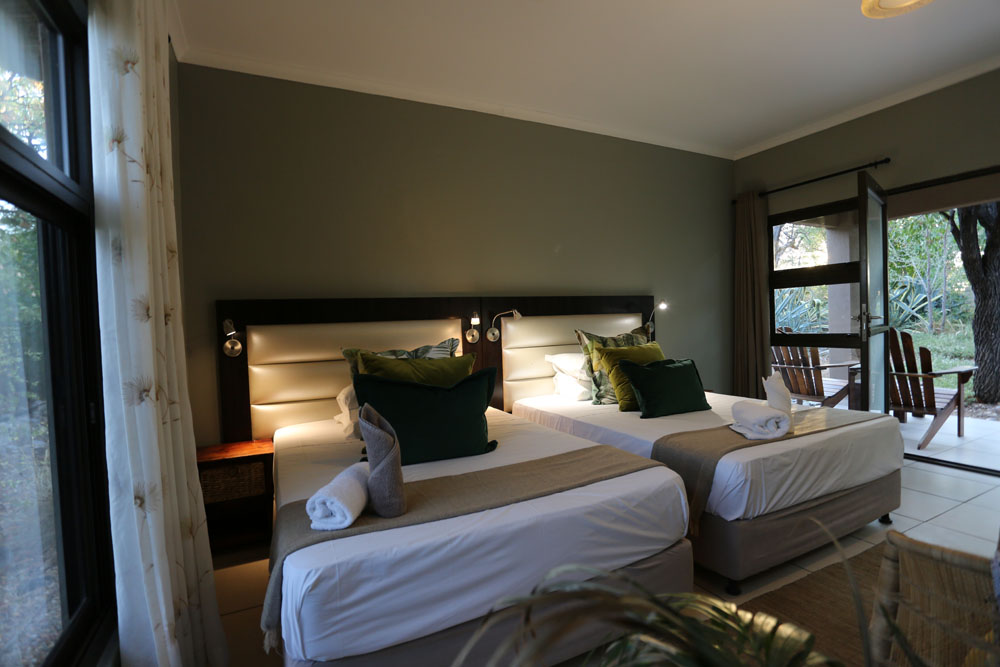
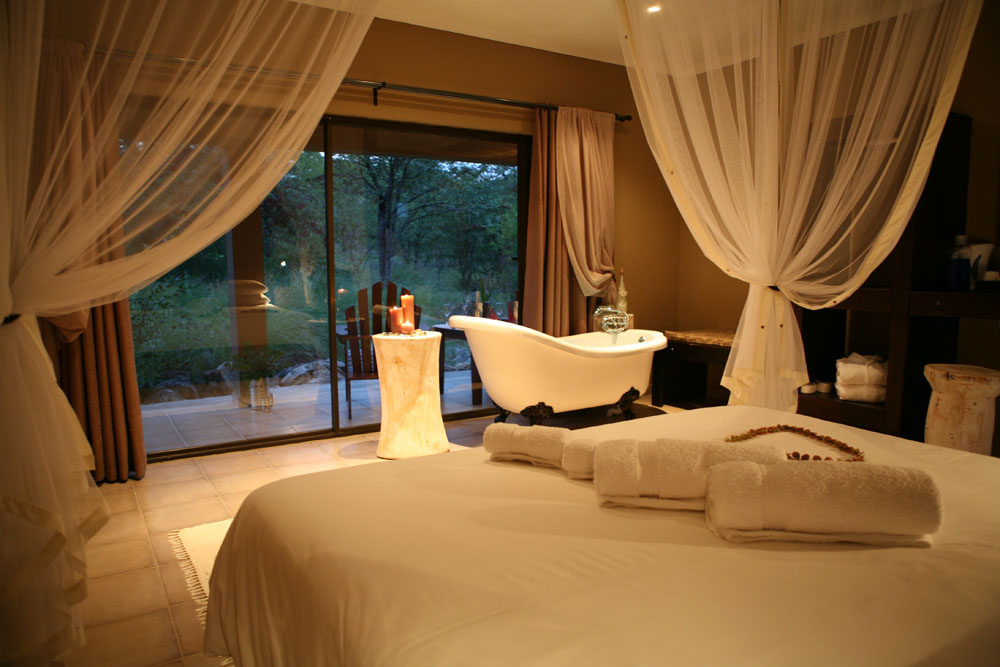
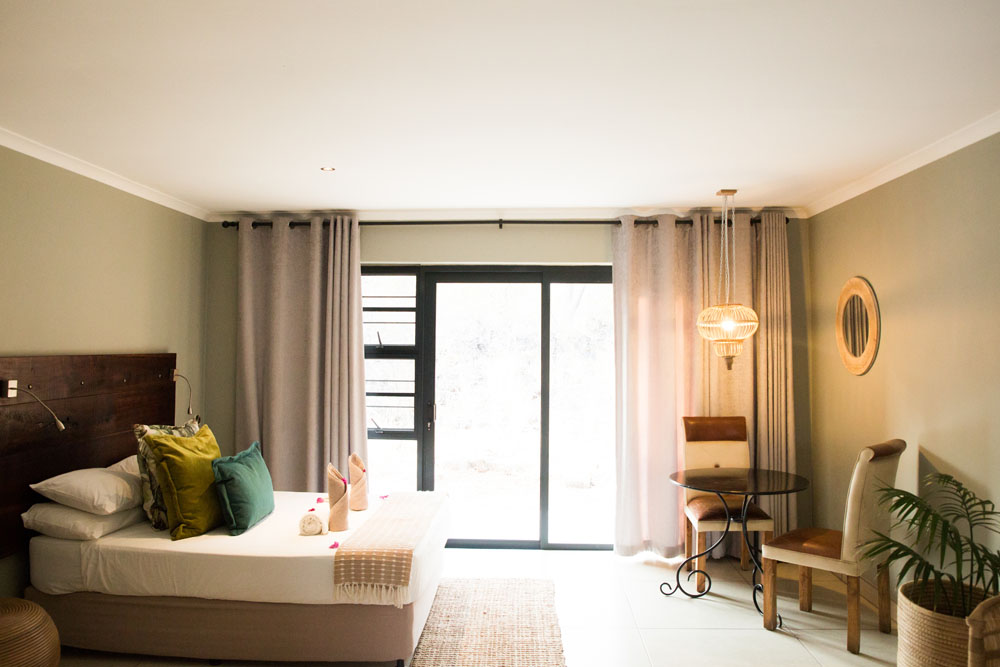
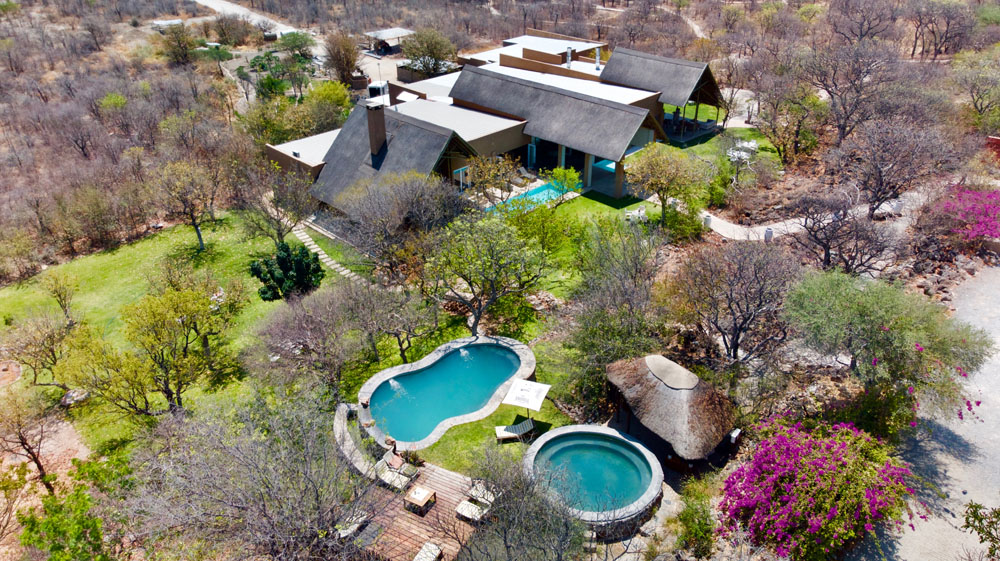












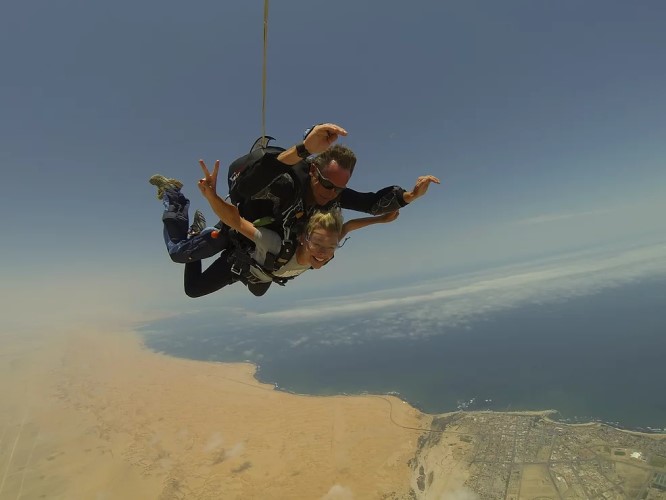
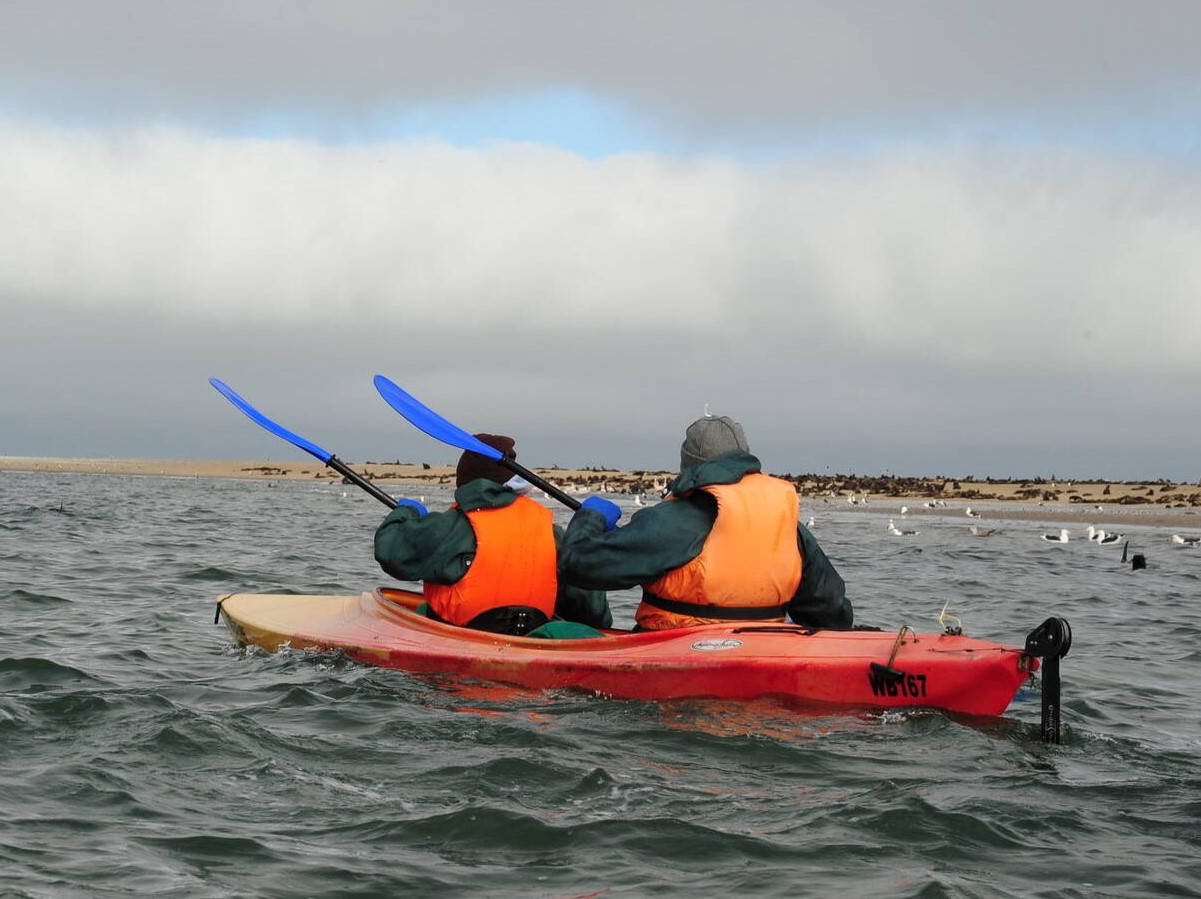
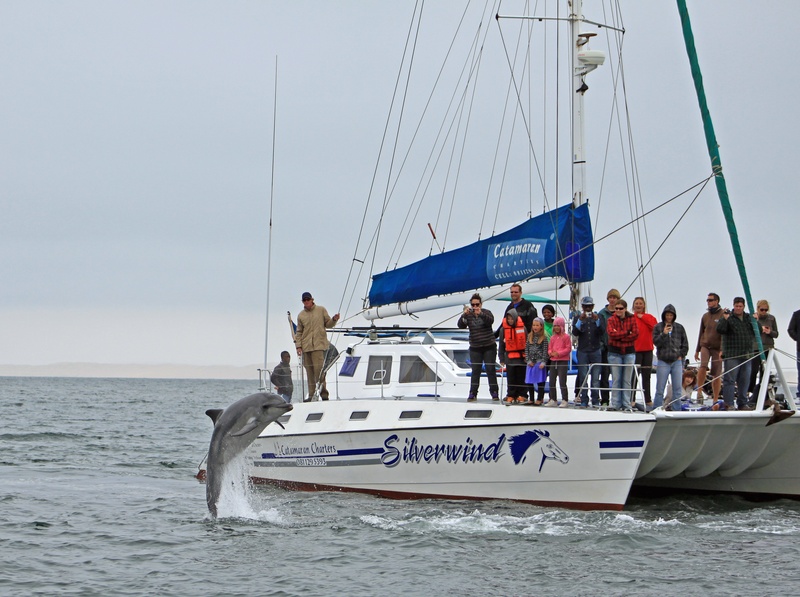
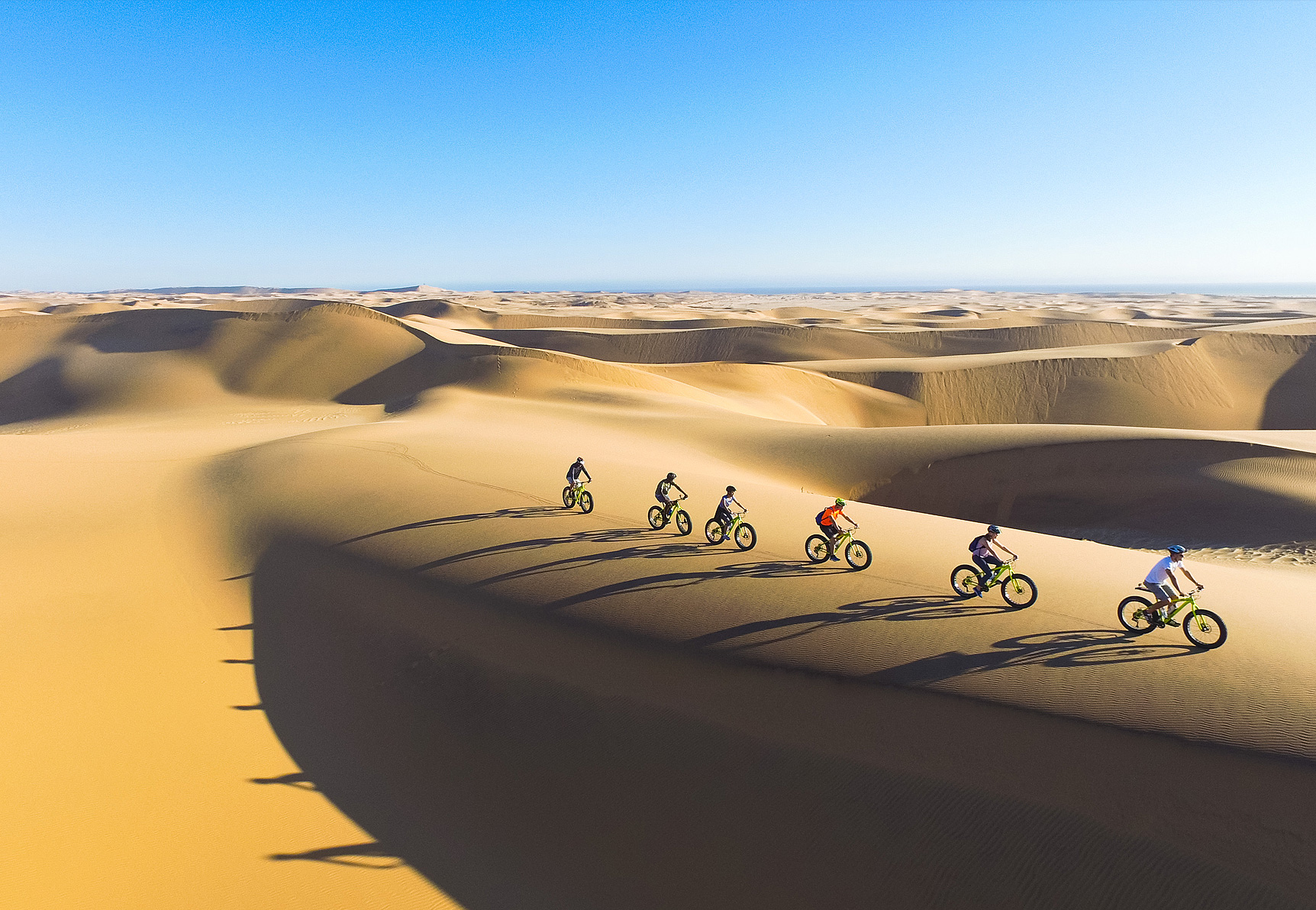

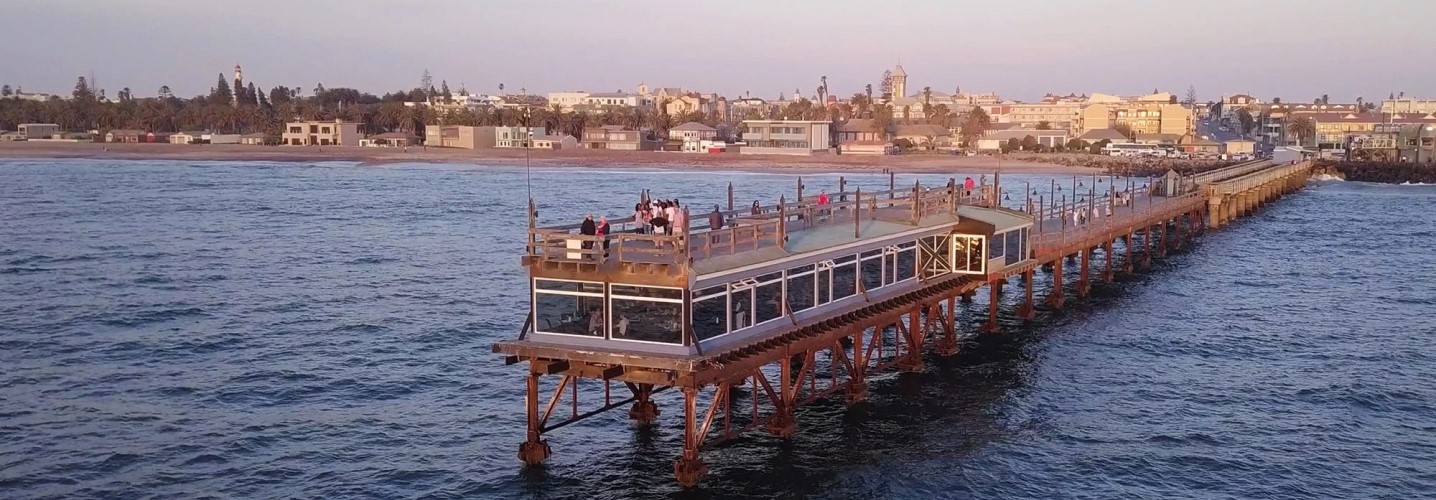
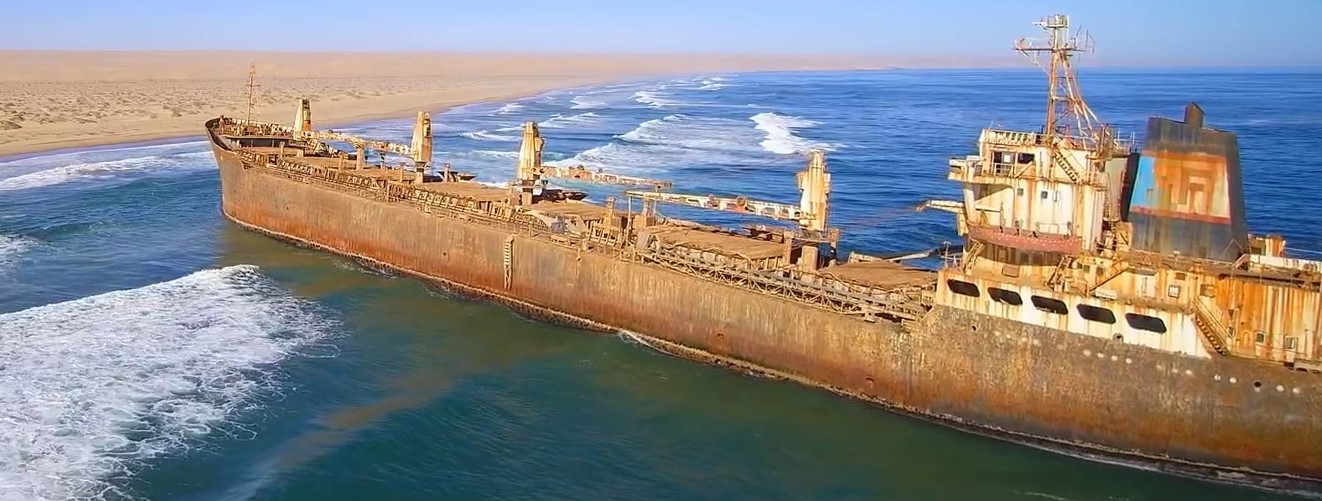









Write a Review